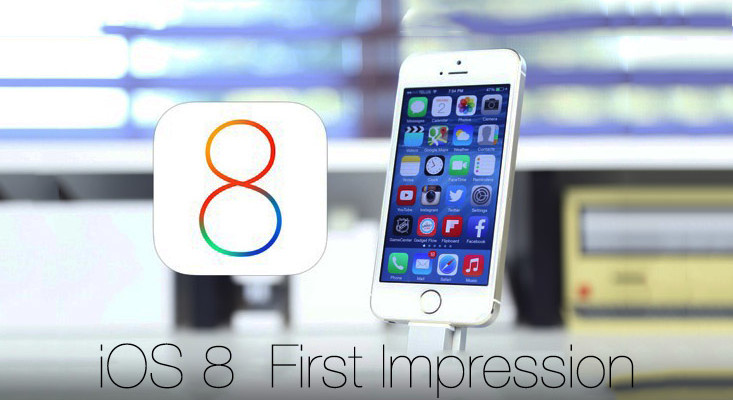Apple announced iOS 8 at their WWDC conference a couple of weeks back and the beta version was made available exclusively to the developers. We decided to take it for a spin and actually use it for a while to get a feel of it before writing this article.
The first thing you notice when you boot iOS 8 is that there are no significant changes to make it a noteworthy update. We had to dig around to actually notice the new features. Though things might seem this way, iOS 8 is the biggest update Apple has done to their mobile operating system.
They put in a new Health App which collects data from M8 Motion Coprocessor and other fitness trackers to a single place. Also, there is the predictive keyboard which is a bit painful to use right now(remember this is just the first beta. Things will be way better before the final release). The notifications are a lot more interactive without you having to open the app. Widgets on the Notification Centre will prove to be one of the biggest features.
Camera had a few significant updates like manual exposure control, a timer and a time lapse mode which is super easy to use. Siri also got it’s updates. Now, when your iPhone is connected to the power outlet the keywords ‘Hey Siri’ would activate it without having to touch your phone just the way ‘OK Google’ works on Moto X. This was incredibly cool. Also, she’ll be able to listen to music and Shazam it for you.
We’ve compiled a playlist of iOS 8 preview videos for you to check out. The videos are short and gives the quick preview of what iOS 8 holds for everyone when it releases during the fall.
That’s it! This was all the significant features we noticed on iOS 8. Well, at least for now. The popularity for iOS has been due to it’s rich App Ecosystem. Apple for the first time has released an OS which would allow the developers to build the user experience. We’ll be able to use our own keyboards like SwiftKey and apps will be able to talk to each other. Also, apps will be able to use the Touch ID in their apps.
Apple also released HomeKit which would act as a common interface for home automation devices like Leaf and Philips Hue. Apple went even further and created a New Programming Language called Swift to replace the age old Objective C which was extremely difficult for a beginner. With this, Apple will be able to get a lot more developers to develop apps for iOS.
Rather than being excited for the new iOS update, we can’t wait to see what developers would be able to do with the newly opened up possibilities.


Leave a Reply